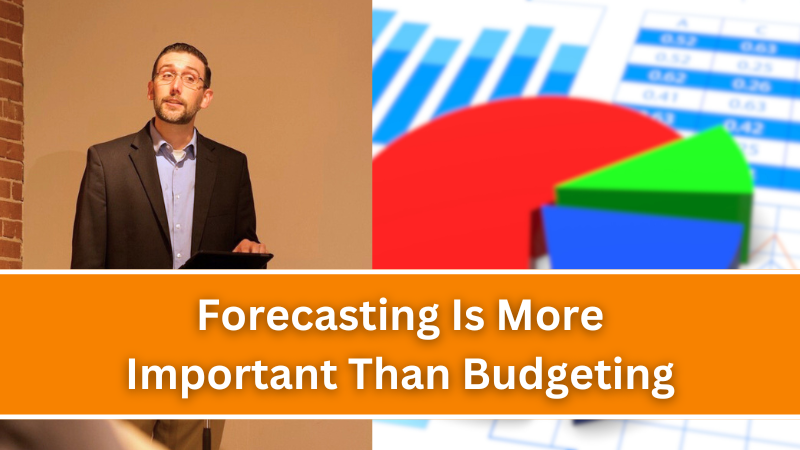At our “3 Must-Know Year-End Tax Strategies” event in November, Jonathan Bill explained how budgets are a license to spend, but forecasts are a license to make profit.
Based on the book Simple Numbers by Greg Crabtree, which we use here at SBS Accounting & Advisors as one of our frameworks, monthly forecasting has three main benefits.
First, you’ll begin to think more strategically about your company. Monthly forecasting forces you to regularly consider the big picture. It goes back to the trite, but true, expression that we all need to spend more time working on our businesses and less time in our businesses.
As you begin to flex your forecasting muscle, you’ll start to identify key drivers of your revenue and expenses, notice trends, and anticipate potential roadblocks. Over time, you’ll gain a better understanding of your company’s strengths and weaknesses.
As small business owners, we have a lot that comes at us every day. If we are not careful, we can slip into a reactionary mode. Having a set time (and I do recommend it being a set day/time on your calendar each month) to look at your numbers and reforecast, you will start to take more of a proactive approach to your business.
Second, your forecasting will become more accurate as you practice, refine assumptions, and adjust projections based on actual results. Over time, you’ll figure out why there are deviations between forecasts and reality and get more a solid basis for making future financial decisions.
It’s one thing to put together a forecast at the beginning of the year, put it in a drawer, and look at it six or 12 months later, realize you didn’t hit the mark, and say, “Oh, well.” It’s a another thing entirely to be forecasting each month and to see 30 days later whether or not you hit the target you set 30 days ago, whether your goal was realistic or too aggressive.
Third, you’ll start to learn what your turn rate is. As Crabtree explains in Simple Numbers, many companies are like a large ship – they can’t easily change direction. But as you practice forecasting, you’ll figure out how long it takes to make decisions. Crabtree gives the example that through forecasting you can examine the feasibility of trimming labor based on hourly increments like Outback, Starbucks, and other similar large chains. But you may decide to rely on weekly or monthly metrics instead. The point is, eventually you’ll find the answers down to the smallest possible time increment.
Forecasting is a key part of staying competitive in today’s business environment. If you want help setting up a forecasting plan for your business, we’d love to talk with you. Contact us at info@sbsaccountants.com or 770-745-4283 today for a consultation.

